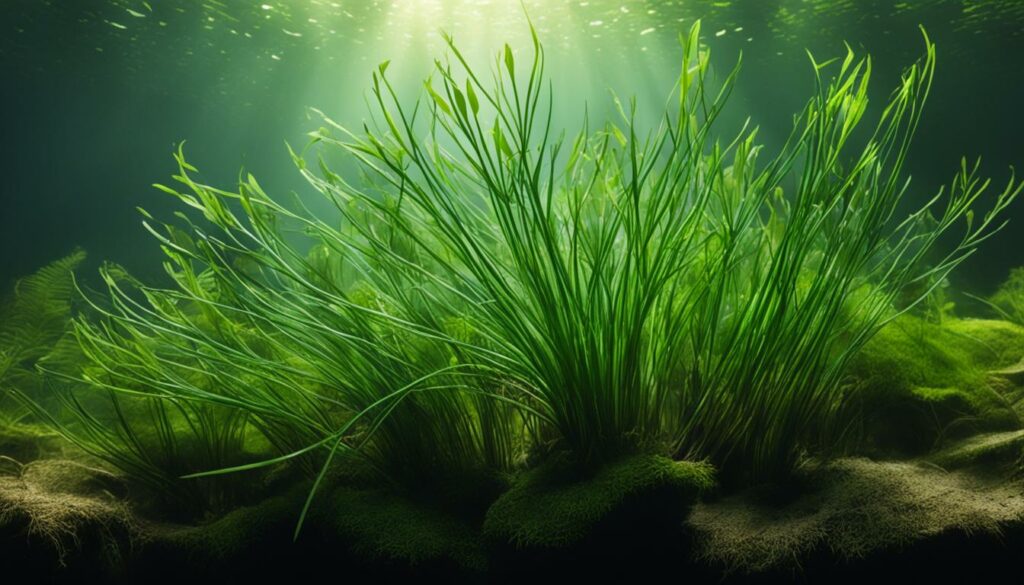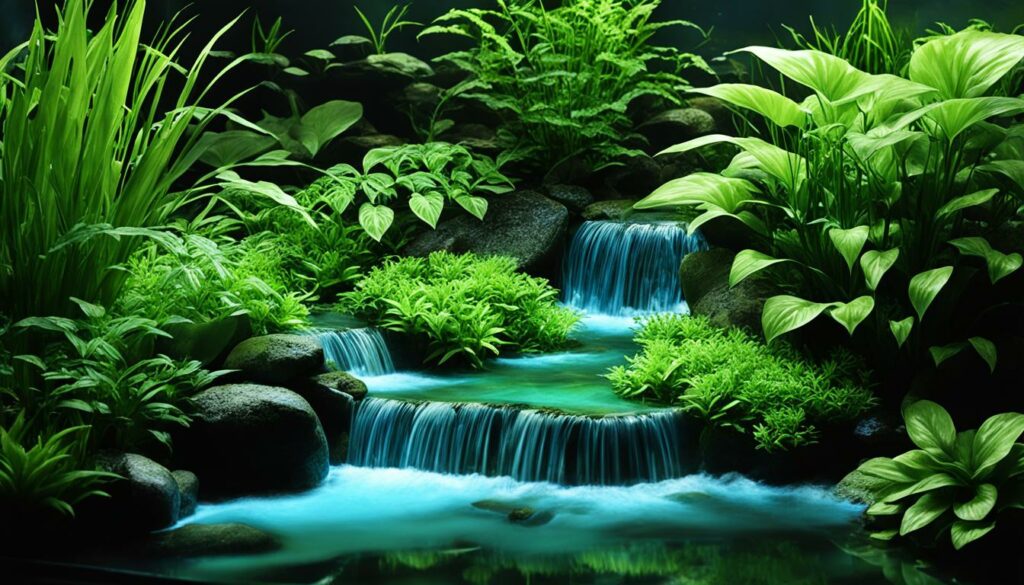
Enhancing streams within your garden can transform ordinary backyard streams into vibrant ecosystems. The integration of plants and stream lighting not only beautifies your landscape streams but also promotes ecological balance. This article delves into the importance of enhancing streams through native vegetation and effective lighting techniques, illustrating how these elements create inviting habitats for aquatic species while elevating the overall aesthetic appeal. By thoughtfully selecting plant life and utilizing efficient stream lighting, homeowners can cultivate a sustainable and serene outdoor environment.
Understanding the Importance of Enhancing Streams
Enhancing streams serves as a vital action to nurture and protect aquatic ecosystems. The functionality of these natural waterways extends far beyond their scenic appeal. Through the careful integration of plants and natural elements, they can flourish and support diverse life forms.
Benefits to Aquatic Ecosystems
Enhancing streams greatly contributes to improving water quality by filtering out pollutants and providing oxygenation. These processes create a healthier environment essential for maintaining robust aquatic ecosystems. Streams that are well-maintained act as nurseries for young fish and other aquatic life, fostering vibrant populations that reflect high levels of stream biodiversity.
Creating Natural Habitats for Wildlife
The presence of diverse plant life along streambanks aids in forming essential wildlife habitats. The vegetation offers food and shelter, attracting various species that rely on these areas for survival. By creating such habitats, enhancing streams supports the overall health of local ecosystems and protects wildlife diversity.
Key Plants for Stream Enhancement
Selecting the appropriate flora plays a vital role in effective stream enhancement. Native aquatic plants serve critical functions in the ecosystem, from improving water quality to providing habitat for various wildlife. Understanding the characteristics and benefits of these plants can significantly enhance the ecological integrity of local streams.
Native Aquatic Plants and Their Benefits
Native aquatic plants contribute to the health of stream ecosystems by offering numerous native plant benefits. These species are typically more resilient in local environments, making them valuable for sustainable restoration efforts. They assist in biological filtration, trapping pollutants and improving water clarity. Additionally, native plants stabilize soil, reducing sediment runoff which leads to healthier aquatic habitats.
Choosing the Right Plants for Your Region
Identifying appropriate native aquatic plants requires knowledge of local vegetation. Certain plants, such as willow and salmonberry, flourish in specific climates and soil types. When selecting plants, individuals should consider:
- Local climate conditions
- Soil type and moisture levels
- Species that provide essential habitat for wildlife
Understanding these factors increases the likelihood of successful establishment and enhances the potential for effective stream enhancement.

Enhancing Streams with Native Vegetation
Incorporating native vegetation along streams serves to significantly improve environmental conditions. The presence of diverse plants contributes to both soil stability and a healthier aquatic ecosystem. This natural approach creates numerous benefits for the surrounding environment.
Improving Soil Stability and Erosion Control
Roots from native plants establish a robust network within the soil, enhancing soil stability. This network effectively prevents the erosion of stream banks, facilitating better erosion control. By minimizing the loss of soil through erosion, these plants help maintain the integrity of the stream's edges. The positive impact on the landscape includes a reduction in sediment runoff that can negatively affect water quality and aquatic habitats.
Providing Food and Shelter for Aquatic Life
Native stream vegetation contributes crucial resources for aquatic life. Organic materials like leaf litter decompose in the water, supplying nutrients that support a variety of organisms. Stream vegetation creates habitats where fish and invertebrates can thrive. This rich biodiversity plays a key role in maintaining the overall health of the ecosystem. Through the introduction of various plant species, habitats become more versatile, ensuring that different forms of aquatic life have access to necessary food and shelter.
Effective Stream Lighting Techniques
Stream lighting plays a crucial role in enhancing the visual landscape of your backyard while ensuring the well-being of aquatic ecosystems. By employing effective lighting techniques, homeowners can create captivating spaces while safeguarding aquatic health. LED lighting stands out as an optimal choice for this purpose.
LED Lighting for Aesthetic Appeal
LED lighting provides an excellent way to elevate the aesthetic appeal of streams. These energy-efficient fixtures boast prolonged lifespans and low maintenance costs, making them an attractive option for any outdoor setting. Available in various colors and intensities, LED lights can be adjusted to suit personal tastes or highlight specific features of the stream.
Lighting Options that Support Aquatic Health
While designing stream lighting, considering its impact on aquatic health is essential. Natural light patterns should not be disrupted, as this can negatively affect the growth of aquatic plants that rely on proper light conditions for photosynthesis. Installing dimmable lighting or focusing on selective areas can minimize disturbance to aquatic life. By employing thoughtful strategies, it becomes possible to achieve beautiful stream lighting without compromising the ecological integrity of the environment.

The Role of Lighting in Stream Ecosystems
Effective lighting plays a crucial role in the health and vitality of stream ecosystems. It directly influences aquatic plant growth, which forms the basis of these delicate environments. By enhancing the light impact on streams, one can significantly support the overall stream health.
Impact of Light on Aquatic Plant Growth
The relationship between light availability and aquatic plant growth is profound. Adequate light triggers photosynthesis in both submerged and emergent plants, ensuring they thrive. Healthy vegetation contributes not only to the aesthetic appeal of a stream but also to its ecological balance.
Properly managed lighting can yield several benefits for existing plant life, including:
- Improvement in photosynthetic efficiency
- Increased biodiversity among aquatic species
- Enhanced resilience against pollutants
The presence of well-lit areas can lead to greater aquatic insect production, serving as a vital food source for fish and other wildlife. This interconnectedness highlights the essential nature of light in fostering vibrant aquatic environments. Maintaining the right lighting conditions ultimately creates an ecosystem rich in opportunities for growth and survival.
Integrating Streams into Landscape Design
Incorporating streams into landscape design significantly enhances both aesthetics and functionality. A well-planned integration fosters a cohesive landscape that perfectly balances natural elements with cultivated spaces. The placement of streams plays a crucial role in achieving desirable stream aesthetics while ensuring smooth transitions between different areas of a yard or garden.
Creating a Cohesive Landscape with Streams
Thoughtful stream integration can create a unified outdoor environment. This involves considering the natural curves and bends of a stream which not only improve visual appeal but also align with the water's natural flow. Strategically selecting plants along the stream's edge can amplify the beauty of the landscape. Native plants provide ecological benefits that enhance *ecosystem health* while contributing to the overall visual harmony of the backyard.
Stream Placement and Its Aesthetic Value
Effective placement is vital for maximizing the aesthetic value of streams. Streams should be positioned to complement existing landscape features, drawing attention to natural beauty and promoting a seamless design. Aligning the waterway with pathways or viewpoints enhances interaction, offering delightful opportunities for observation. The result is a captivating landscape that not only serves as a stunning centerpiece, but also enriches the experience of outdoor living.
Enhancing Streams: Maintenance and Management
Proper maintenance and management are vital for the longevity and health of enhanced streams. Regular stream maintenance involves thorough monitoring of ecosystem health. Evaluating the condition of both the plants and water quality plays a crucial role in identifying necessary improvements for sustainable growth.
Monitoring Ecosystem Health
Assessing ecosystem health requires a multifaceted approach. Key indicators include:
- Plant vitality
- Water clarity
- Presence of aquatic life
- Nutrient levels
Regular evaluations help pinpoint areas that may need attention, ensuring the stream environment remains thriving and resilient. Effective stream management focuses on adapting strategies based on these assessments.
Seasonal Care for Stream Plants and Lighting
Implementing seasonal care practices is essential for maintaining the overall balance of the ecosystem. Depending on the time of year, activities may include:
- Pruning plants to promote healthy growth
- Adjusting lighting setups to support aquatic health
- Removing debris and invasive species
- Monitoring and replenishing nutrients
These actions not only enhance the aesthetic appeal of the stream but also fortify its ecological integrity. Consistent effort in stream maintenance ensures a thriving habitat for all forms of life.
Conclusion
Enhancing streams through the integration of plants and lighting plays a crucial role in creating sustainable landscapes that thrive both aesthetically and ecologically. By incorporating native vegetation, homeowners can significantly enrich aquatic ecosystems, providing habitats that support local wildlife and promote biodiversity. These natural solutions not only regenerate stream health but also offer a multitude of ecological benefits that resonate throughout the surrounding environment.
Thoughtful lighting designs can further enhance the visual appeal of these waterways while ensuring that the stream ecosystems maintain their natural balance. Implementing effective strategies for stream enhancement not only beautifies one's landscape but also reinforces the importance of biodiversity and ecological resilience. This holistic approach encourages individuals to take part in fostering healthier, more vibrant ecosystems right in their own backyards.
As communities continue to recognize the importance of enhancing streams, the cumulative impact of individual efforts can lead to significantly healthier waterways. By understanding the role that both plants and lighting play, homeowners and landscapers alike can contribute to a sustainable future that balances human activity with nature's needs, making the world a greener place for generations to come.








